2019-20 migratory bird hunting seasons
Indiana’s migratory bird hunting seasons for 2019-20 have been submitted to the U.S. Fish & Wildlife Service. These seasons include those for mourning doves, waterfowl (ducks, coots, mergansers, and geese), woodcock, snipe, and sora rails.

For information on bag limits, shooting hours, other regulations, falconry dates, and youth-/veteran-only hunt dates, please visit hunting.IN.gov.
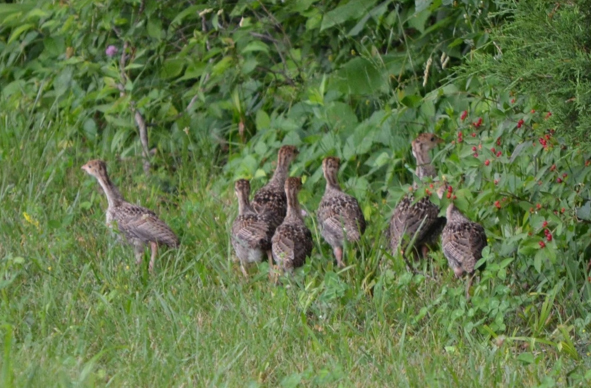 Help us count wild turkeys this summer
Each summer, wildlife biologists and citizen scientists count the number of young wild turkeys (poults) with turkey hens in what are termed “brood surveys.” These surveys provide the DNR with information about turkey poult survival and help staff determine how to best manage wild turkey.
This summer, our goal is to collect 3,000 brood observation reports from citizens across the state. The survey runs from July 1 to Aug. 31.
If you are interested in participating, please register after June 10 at https://www.in.gov/dnr/fishwild/8641.htm.
Help us keep track of our wild turkey populations by participating in this survey and spreading the word.
Learn to hunt or shoot
Caught an unfamiliar fish? We can help
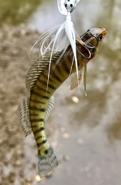
Ever hooked a fish that left you scratching your head? There is now an easy way to help identify your catch. Snap a photo or two, provide some information on where it was caught, and send it all to fishid@dnr.IN.gov for identification. Not only will you be able to settle disputes, but we can also receive important location information for rare species.
Find the complete Fish Identification form and check out our list of Indiana fishes here.
Fish pictured: Logperch
|
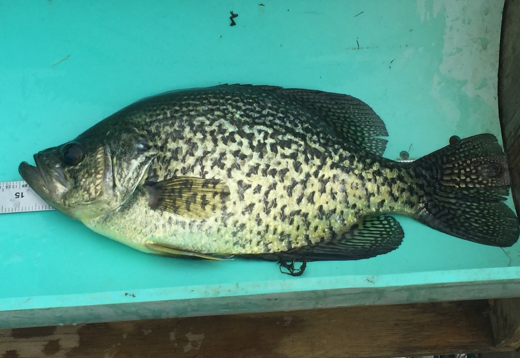 Crappie update at West Boggs Lake
West Boggs Lake in Loogootee, is one of many lakes statewide that is stocked and managed by fisheries biologists. Data from a recent survey revealed that West Boggs crappie are growing much faster than most Indiana crappie. Many fish caught were more than 3 inches longer than the average fish of the same age.
Black crappie are a popular gamefish that can be harvested at any length with a daily bag limit of 25 fish. They prefer abundant cover and vegetation; anglers looking for crappie should fish close to areas with fallen trees and aquatic vegetation.
Learn more about crappie and how to fish for them or contact your district fisheries biologist.
Women’s fishing events in June
Volunteer at the State Fair Fishin’ Pond
|
More than 300 volunteers have registered for the State Fair Fishin’ Pond since May 13, but we still need another 300.
|
Pond management series available online
Purdue Extension, in consultation with the DNR and other state and federal agencies, is producing a series of pond management publications and videos. The series is meant to both introduce private pond management and address common questions about the topic. Purdue Extension has already released “Stocking Fish in Indiana Ponds,” the first of many publications dealing with pond ecology and fish and wildlife management. You can view the most recent publication here.
Look for additional fact sheets and videos about pond management throughout the coming year.
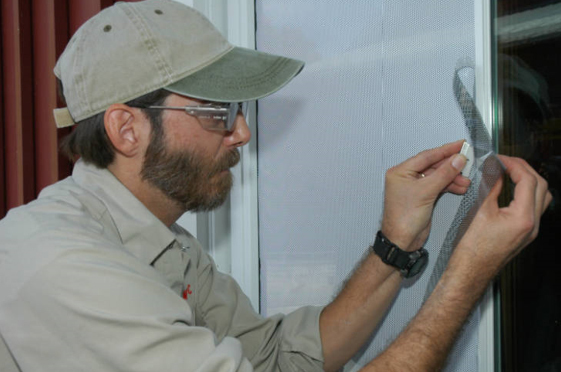 Biologist applying anti-glare window film
Who’s knocking on my window?
Songbirds often nest in our yards each spring and summer after establishing territories. Some birds will defend their territories against competitors with vigor – even if it’s only their own reflection. Some people are entertained by the aggressive display that results.
However, others see it as a disturbance. The best solution may be patience: see if the bird stops as the season progresses. Another option is to make the window less reflective by hanging a light cloth over it or applying a decorative window decal, usually available in bathroom decoration sections of hardware stores.
Found an injured bird near a window? Contact a licensed wildlife rehabilitator.
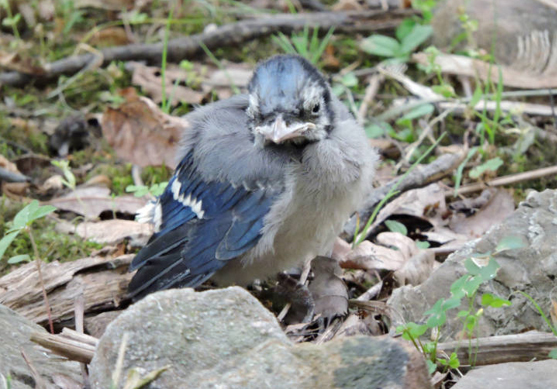 Juvenile blue jay courtesy of the U.S. Fish & Wildlife Service
Support birds of all ages with backyard habitat
With the warm weather approaching, many young birds will be hatching and leaving their nests. While seeds and suet may be appropriate for adult birds, hatchlings require high-protein insects to thrive.
To enhance your birdwatching experience, consider planting a variety of native wildflowers and grasses alongside existing birdfeeders. Many of Indiana’s native trees and shrubs have beautiful flowers that host a variety of insect species. Not only do these native plants host a plethora of native insects, but standing vegetation throughout the year provides valuable nesting material for birds. Planting trees, flowers, and grasses in your yard can not only help attract birds and beautify your yard, but also cut down on time and resources spent mowing and maintaining turf grass.
For more information on incorporating native plants into your backyard, contact your district biologist.
 Nongame Fund at Work: Birds
In June, tiny camouflaged eggs laid by least terns, the smallest tern in North America, will be hatching in their nests on gravel sandbars or islands along Indiana’s major rivers.
These little terns will need your help to raise their chicks successfully. If you find a nesting colony while boating on Indiana’s rivers, select a different spot to picnic because terns will leave their nests when disturbed, leaving chicks vulnerable to predators and harsh weather. Nongame bird biologists work closely with landowners at known nesting colonies to reduce these risks using various approaches. An example is monitoring predators with camera traps.
You can also help least terns by donating.
More

About Fish and Wildlife Management in Indiana
Fish and wildlife management and public access are funded by fishing and hunting license revenue and also through the Wildlife and Sport Fish Restoration Programs administered by the U.S. Fish & Wildlife Service. These programs collect excise taxes on sporting arms and ammunition, archery equipment, fishing equipment, and motor boat fuels. The money is distributed among state fish and wildlife agencies based on land size and the number of licensed anglers and hunters in each state. Find out more information about fish and wildlife management in Indiana at Wildlife.IN.gov.
|